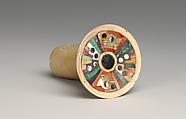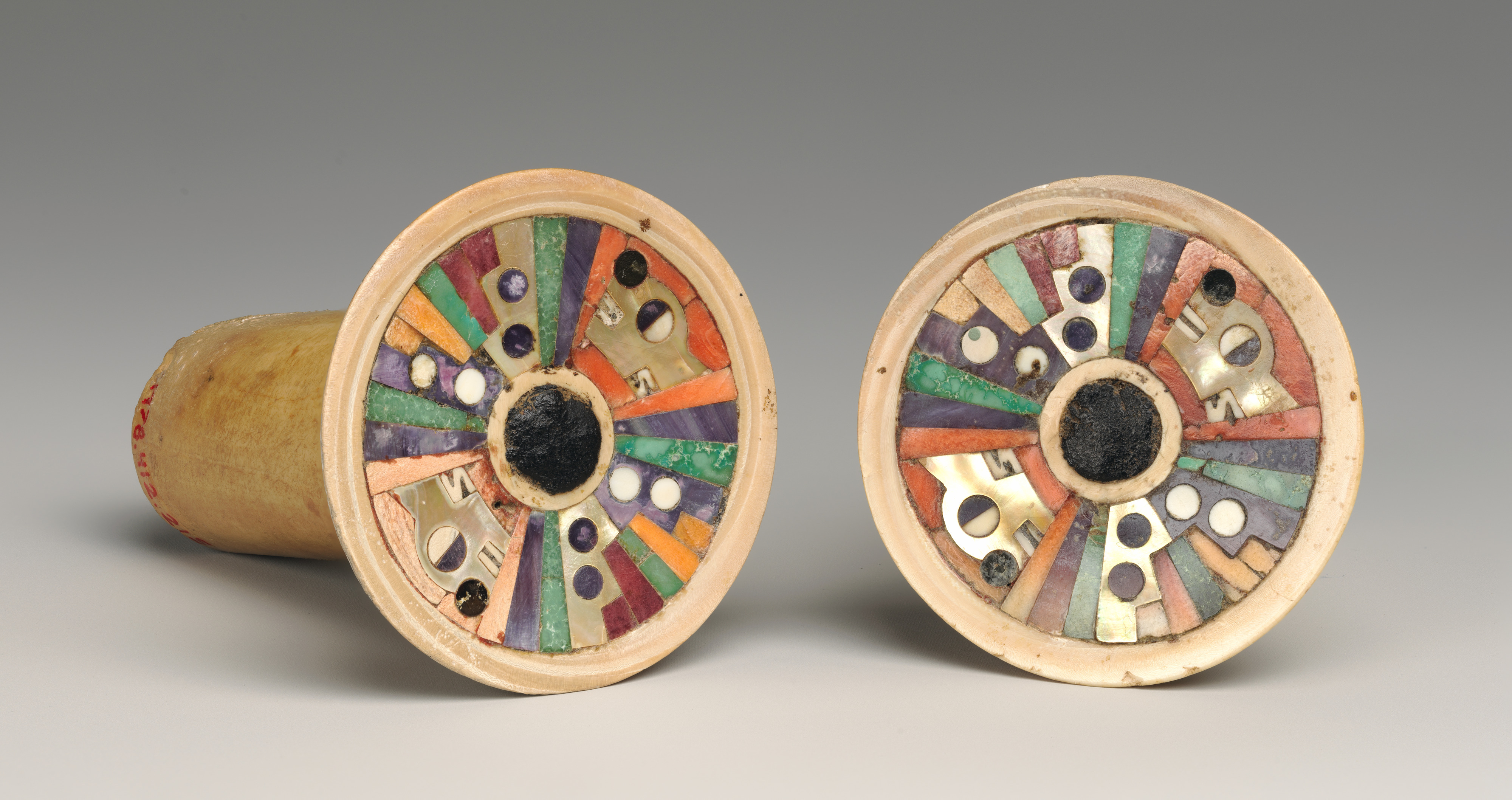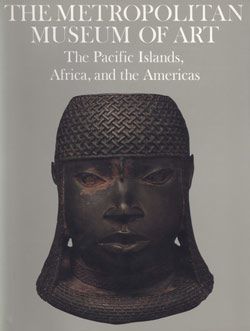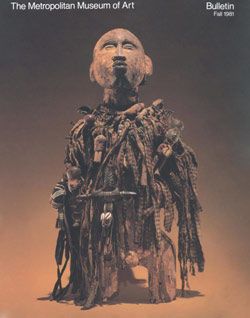Ear ornament
This ear ornament, one of a pair with MMA 1978.412.215, is composed of a shaft made of bone that would be inserted through the lobe and a decorated, circular front featuring a mosaic made of pieces of different shells and stones. Two quadrants of rays separate two opposing animal heads, seen in profile, with split eyes and button noses.
Artists of the Wari empire created extraordinarily fine weavings and burnished ceramics, as well as refined mosaic works in shell and stone. The capital of the empire, known as Wari (sometimes spelled Huari), was in the central highlands of Peru, near the modern city of Ayacucho, but its influence was felt from Chiclayo in the north to Moquegua in the south. This expansive domination provided a variety of luxury materials used to produce goods for the elite. For example, this ear flare and its mate (1978.412.215) combine orange and purple Spondylus shell found in the warm waters of the coast of Ecuador and northern Peru with more local mother-of-pearl, purple muscle, and turquoise. Other Wari objects for the elite might include materials such as feathers from the Amazon and lapis lazuli from Chile.
References and Further Reading
Bergh, Susan E. Wari: Lords of the Ancient Andes. New York and Cleveland: Thames & Hudson; The Cleveland Museum of Art, 2012.
Cabrera Romero, Martha, et al., Wari: Arte precolombino Peruano. Seville: Centro Cultural El Monte, 2001.
Giersz, Milosz, and Cecilia Pardo. Castillo de Huarmey: El mausoleo imperial Wari. Lima: Museo de Arte de Lima, 2014.
Isbell, William Harris, Mauricio Uribe, Anne Tiballi, and Edward P. Zegarra, eds. Images in Action: The Southern Andean Iconographic Series. Los Angeles, CA: UCLA Cotsen Institute of Archaeology Press, 2018.
Jennings, Justin. Beyond Wari Walls: Regional Perspectives on Middle Horizon Peru. Albuquerque: University of New Mexico Press, 2010.
This image cannot be enlarged, viewed at full screen, or downloaded.
This artwork is meant to be viewed from right to left. Scroll left to view more.





